Issue Archive
Table of Contents
BLOOD COMMENTARIES
HOW I TREAT
How I treat gastrointestinal bleeding in congenital and acquired von Willebrand disease
Biguzzi and colleagues use 5 illustrative cases to present their approach to gastrointestinal bleeding in the setting of congenital and acquired von Willebrand disease, stressing the importance of endoscopic evaluation, the role of arteriovenous malformations, and therapy with rescue therapies and iron supplementation.
CLINICAL TRIALS AND OBSERVATIONS
Outcomes of COVID-19 in patients with CLL: a multicenter international experience
Clinical Trials & Observations
The authors analyzed the outcomes of an international cohort of 198 patients with symptomatic COVID-19 and chronic lymphocytic leukemia (CLL), demonstrating a case fatality rate of 33%. Outcomes were similar in treatment-naïve and treated patients. Treatment with Bruton tyrosine kinase (BTK) inhibitors did not appear to affect survival, though it was held in most patients with symptomatic disease.
HEMATOPOIESIS AND STEM CELLS
CD86-based analysis enables observation of bona fide hematopoietic responses
Sca-1 positivity has been traditionally used as a marker for hematopoietic stem cells (HSCs) and multipotent progenitors (MPPs). While it is meaningful in steady-state conditions, Kanayama and colleagues demonstrated that inflammation upregulates Sca-1 expression on lineage committed cells, and that CD86 expression is a better means for distinguishing HSCs/MPPs from committed progenitors. This will facilitate future investigations of the dynamics of stress hematopoiesis.
IMMUNOBIOLOGY AND IMMUNOTHERAPY
Metabolic engineering against the arginine microenvironment enhances CAR-T cell proliferation and therapeutic activity
Brief Report
Proliferation of many hematologic and solid malignancies is driven partly through catabolism of arginine, creating an arginine-deficient extracellular milieu. Since T cells express very low levels of arginine resynthesis enzymes, they proliferate poorly in low levels of arginine. Engineering chimeric antigen receptor (CAR) T cells to also express arginosuccinate synthase or ornithine transcarbamylase improves CAR T-cell proliferation without loss of efficiacy.
LYMPHOID NEOPLASIA
Effects of germline DHFR and FPGS variants on methotrexate metabolism and relapse of leukemia
Tulstrup et al used genome-wide association studies to identify germline variants that modulate methotrexate metabolism, explaining interpatient variability in methotrexate response.
PHAGOCYTES, GRANULOCYTES, AND MYELOPOIESIS
Neutrophil extracellular traps contribute to immunothrombosis in COVID-19 acute respiratory distress syndrome
The authors report that neutrophil extracellular traps (NETs) are increased in patients with severe COVID-19, and are induced in normal neutrophils by exposure to plasma from patients infected with SARS-CoV-2. Autopsy studies of lungs from patients succumbing to COVID-19 showed abundant NET-containing microthrombi and extensive neutrophil and platelet infiltration, suggesting that NET-triggered immunothrombosis may be central to the thrombotic complications of COVID-19.
PLATELETS AND THROMBOPOIESIS
Talin-1 is the principal platelet Rap1 effector of integrin activation
Rap1 plays an important role in multiple aspects of platelet function, including talin-1 binding to activate integrins, as well as thrombopoiesis, platelet secretion, and surface expression of phosphatidylserine. Lagarrigue et al investigated the interaction of talin-1 and Rap1, demonstrating that Rap1–talin-1 interaction is required for platelet integrin activation but not for other Rap1-mediated platelet functions.
RED CELLS, IRON, AND ERYTHROPOIESIS
Progressive vasoconstriction with sequential thermal stimulation indicates vascular dysautonomia in sickle cell disease
Decreased microvascular blood flow (MBF) predisposes to vasocclusion by sickled red blood cells. The authors demonstrate that sequential thermal stimulation of one hand decreases MBF in the contralateral hand in both sickle cell disease (SCD) patients and normal controls. However, SCD patients had augmented and progressive decreases in blood flow relative to controls, likely providing a link between environmental cold and heat exposure and SCD vaso-occlusive crisis.
TRANSPLANTATION
Hematopoietic cell transplantation in chronic granulomatous disease: a study of 712 children and adults
The authors report on a retrospective multicenter analysis of 712 patients who had undergone transplantation for chronic granulomatous disease (CGD) between 1993 and 2018. Overall survival is excellent, although best for younger patients receiving family donor transplants. Given the long-term infectious and inflammatory morbidity and mortality of this rare immunodeficiency syndrome, the data support early allogeneic transplantation for CGD.
BLOOD WORK
-
Cover Image
Cover Image
![issue cover]()
Neutrophil extracellular traps (NETs) associated with platelets in lungs from a patient who died of COVID-19. Neutrophils are gray (myeloperoxidase), NET-forming neutrophils are green (citrullinated histone H3), platelets are red (platelet factor 4), and DNA is blue (DAPI [4′,6-diamidino-2-phenylindole]). See the article by Middleton et al on page 1169.
- PDF Icon Front MatterFront Matter
- PDF Icon Table of ContentsTable of Contents
- PDF Icon Back MatterBack Matter
- PDF Icon Editorial BoardEditorial Board
Advertisement intended for health care professionals
Email alerts
Advertisement intended for health care professionals



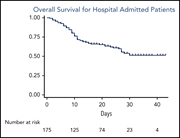
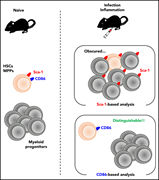
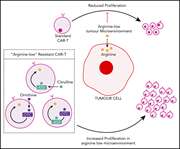

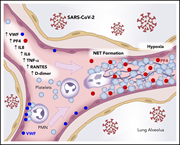
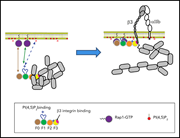

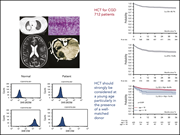

When CLL meets COVID-19
Clinical Trials & Observations